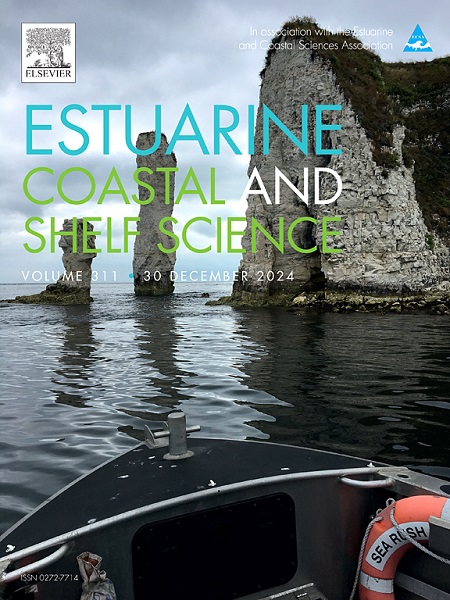Ecological uniqueness of fish assemblages in tropical estuarine and coastal systems: Assessing environmental and spatial drivers
IF 2.6
3区 地球科学
Q1 MARINE & FRESHWATER BIOLOGY
引用次数: 0
Abstract
We assessed the local and species contributions to beta diversity, as well as its relationships with environmental and spatial drivers along the eastern Brazilian coast. Using abundance-based indices, total beta diversity was partitioned into “Local Contribution to Beta Diversity” (LCBD) and “Species Contribution to Beta Diversity” (SCBD) components at two levels (estuarine-coastal systems; estuarine and coastal areas). Furthermore, we evaluated the relationships between LCBD values and local environmental conditions and spatial structures, in addition to fish assemblage metrics. Our results indicated that LCBD values were higher in the estuarine areas compared to their adjacent coastal areas and primarily associated with lower salinity and depth, and higher temperatures. Spatial effects were indicative of higher local uniqueness related to unmeasured large-scale processes. Sites with higher species diversity and lower dominance had higher LCBD, while species richness had slight positive influence on LCBD at both levels. The contributions of species varied within and between levels, but the highest SCBD values were supported primarily by common and dominant species. Our study highlights the importance of the environmental conditions provided by estuarine areas for the overall variation of fish assemblages.
求助全文
约1分钟内获得全文
求助全文
来源期刊
CiteScore
5.60
自引率
7.10%
发文量
374
审稿时长
9 months
期刊介绍:
Estuarine, Coastal and Shelf Science is an international multidisciplinary journal devoted to the analysis of saline water phenomena ranging from the outer edge of the continental shelf to the upper limits of the tidal zone. The journal provides a unique forum, unifying the multidisciplinary approaches to the study of the oceanography of estuaries, coastal zones, and continental shelf seas. It features original research papers, review papers and short communications treating such disciplines as zoology, botany, geology, sedimentology, physical oceanography.

 求助内容:
求助内容: 应助结果提醒方式:
应助结果提醒方式:


